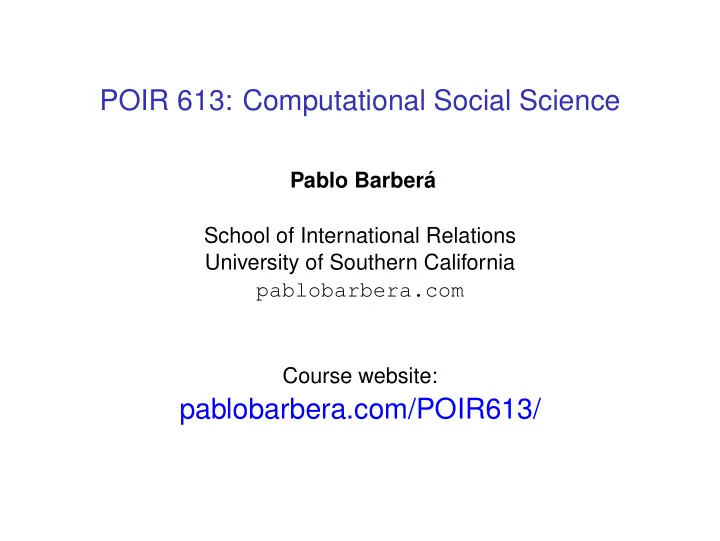

POIR 613: Computational Social Science Pablo Barber´ a School of International Relations University of Southern California pablobarbera.com Course website: pablobarbera.com/POIR613/
Introduction to SQL
Databases ◮ Database systems: computerized mechanisms to store and retrieve data. ◮ Relational databases: data is represented as tables linked based on common keys (to avoid redundancy).
SQL ◮ SQL (pronounced S-Q-L or SEQUEL) is a language designed to query relational databases ◮ Used by most financial and commercial companies ◮ The result of an SQL query is always a table ◮ It’s a nonprocedural language: define inputs and outputs; how the statement is executed is left to the optimizer ◮ How long SQL queries depends on optimization that is opaque to user (which is great!) ◮ SQL is a language that works with many commercial products: ◮ Oracle Database, SQL Server (MS), MySQL, PostgreSQL, SQLite (all three open-source), Google BigQuery, Amazon Redshift... ◮ Performance will vary, but generally faster than standard data frame manipulation in R (and much more scalable)
Components of a SQL query ◮ SELECT columns ◮ FROM a table in a database ◮ WHERE rows meet a condition ◮ GROUP BY values of a column ◮ ORDER BY values of a column when displaying results ◮ LIMIT to only X number of rows in resulting table ◮ Always required: SELECT and FROM. Rest are optional. ◮ SELECT can be combined with operators such as SUM, COUNT, AVG... ◮ To merge multiple tables, you can use JOIN
SQL at scale Google BigQuery ◮ One of many commercial SQL databases available (Amazon RedShift, Microsoft Azure, Oracle Live SQL...) ◮ Used by many financial and commercial companies ◮ Advantages: ◮ Integration with other Google data storage solutions (Google Drive, Google Cloud Storage) ◮ Scalable: same SQL syntax for datasets of any size ◮ Easy to collaborate and export results ◮ Affordable pricing and cost control ◮ API access allows integration with R or python ◮ Excellent documentation
Recommend
More recommend